Smile Gallery
The following examples best illustrate our capabilities.
![]()
Case Study 01, Abscessed, Non-Restorable Tooth
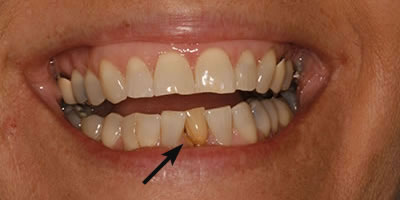
BEFORE : Just one tooth can adversely affect a person’s smile and oral health. This patient had one abscessed tooth that was a source of infection, discomfort and distraction in an otherwise attractive smile.
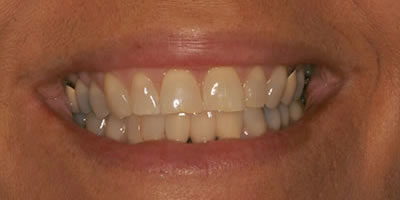
AFTER : A three tooth bridge was made to replace the non-restorable tooth. With the advanced porcelains and color matching capabilities we now have, a very natural replacement was able to be provided for this patient.
![]()
Case Study 02, Internal Bleaching (Whitening)
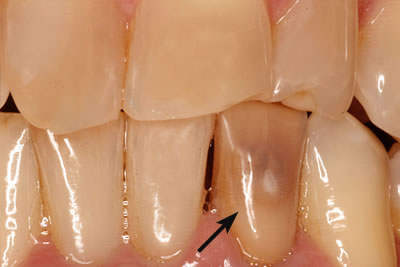
BEFORE : Frequently, a front tooth will become discolored when it is not vital and has had root canal treatment. This tooth may be sound and healthy, but unattractive; it does not need a crown.

AFTER : When the tooth does not need restoring with a crown, internal bleaching (whitening) of the discolored inner portion of the tooth restores the tooth to its proper shade, matching the other teeth.
Total Treatment Time: 2 hours
![]()
Case Study 03, Tooth Colored (Composite) Fillings of Front Teeth

BEFORE : Fear of dental procedures can lead to severe dental neglect. This gentleman had avoided any dental care over the years. He was expecting to have all of his teeth replaced with dentures.

AFTER : Often, restoring a mouth to health can be achieved quickly and comfortably. Using local anesthesia and laughing gas (nitrous oxide) sedation, he was able to comfortably have composite restorations performed. Completed in 1 Appointment
![]()
Case Study 04, Tooth Colored (Composite) Fillings of Back Teeth
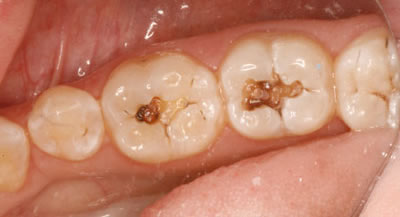
BEFORE : Small to moderate amounts of decay are often “hidden” under sound enamel. Once the enamel is removed, the decayed dentin is readily visible and accessible for removal.
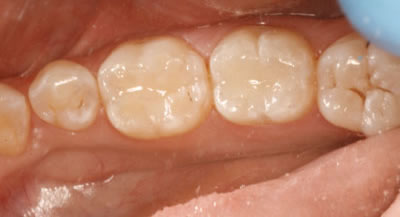
AFTER : Tooth colored fillings are often the best restoration choice in back teeth, as well as in front teeth. These molars appear as if they were never decayed after restoring with composite.
![]()
Case Study 05, Teeth Grinding (Bruxism)
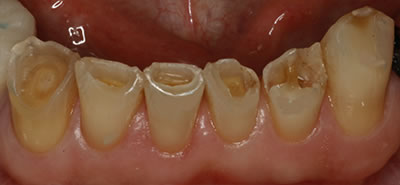
BEFORE : Bruxism (grinding) of a person’s teeth is one of the most under-diagnosed and under-treated dental problems. Chips and irregular edges of the lower teeth are evidence of damage caused by bruxism.

AFTER : The worn edges have conservatively been restored with composite to more level biting edges and balanced biting forces against the upper incisions. One appointment, with no local anesthesia, was needed to complete these restorations.
![]()
Case Study 06, Crowns for Bruxism

BEFORE : Severe wear from bruxism has left this patient in danger of losing many teeth. The lower teeth need to be restored to normal shape, height and function by multiple crown restorations.

AFTER : After crowns on all of the lower teeth have been placed, this patient has much more attractive lower teeth and a functional occlusion.
![]()
Case Study 07, Smile Makeover with Crowns and Veneers

BEFORE : Over time, the aging process causes teeth to stain, wear unevenly, shift positions, and change gingival levels.
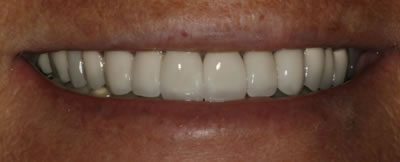
AFTER : A smile makeover with veneers or crowns can brighten the color, realign the teeth, and restore the smile to a more attractive appearance.
![]()
Case Study 08, Treating Tetracycline Stains with Porcelain Veneers
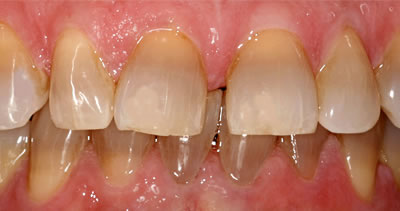
BEFORE : Tetracycline stains and the spacing of this patient’s teeth have caused her to dislike the appearance of her smile. 
AFTER : Porcelain Veneers of the front six teeth transform her teeth into an attractive smile that she is happy to display.
![]()
Case Study 09, Composite Veneers

BEFORE : This young lady has mottled enamel that causes otherwise healthy teeth to look unattractive. With some patients, particularly younger ones, directly applied composite veneers may be a more appropriate treatment alternative than porcelain veneers. 
AFTER : Directly applied composite veneers can be accomplished in a single appointment. This is usually done without any local anesthesia and more economically than porcelain veneers.
![]()
Case Study 10, Treatment of Periodontal Disease
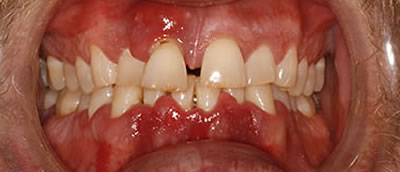
BEFORE : Periodontal disease (gum disease) is the leading cause of tooth loss after the age of 40. When regular dental cleanings and examinations are avoided for even only one or two years, significant or serious periodontal problems can result. Though this patient has no cavities, his gingiva and supporting bone for his teeth are badly infected.
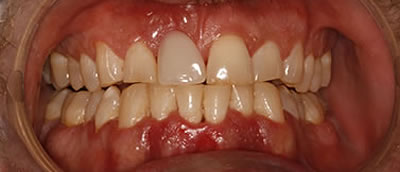
AFTER : The right front tooth was lost as a result of the periodontal disease and replaced with a temporary tooth. Just one week after his upper right front tooth was removed and scaling of his teeth was performed, his Periodontal disease had greatly improved.
![]()
Case Study 11, Dental Implants
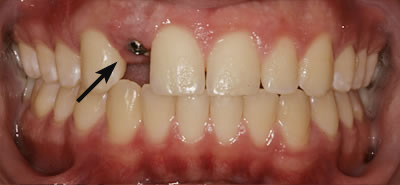
BEFORE : This young adult had lost his upper right lateral incisor as a result of a sports accident. The best way to replace a missing tooth is with a dental implant. It is also the most durable and longest lasting replacement. In this photo, the patient has healed from his implant surgery and is ready to have the implant healing abutment (the small metal cylinder) replaced with the implant tooth.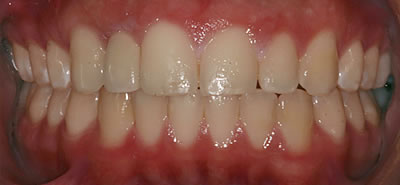
AFTER : The patient's implant tooth is completed, restoring his smile and ability to bite with his front teeth. The process to replace the healing abutment with the implant tooth is painless, requiring only two short appointments and with no use of local anesthesia or the dental hand-piece.





